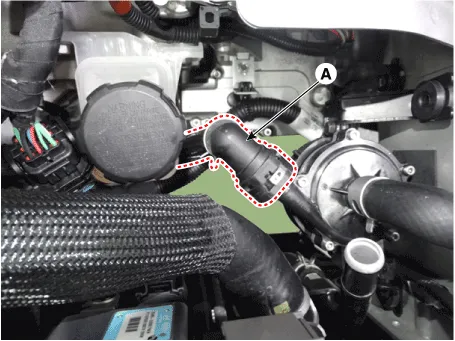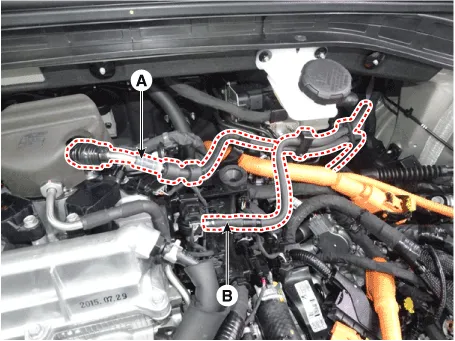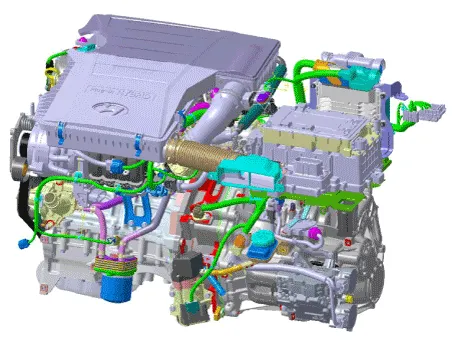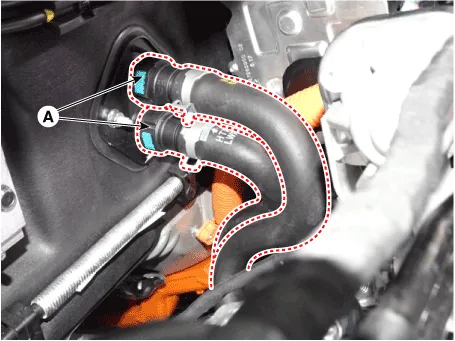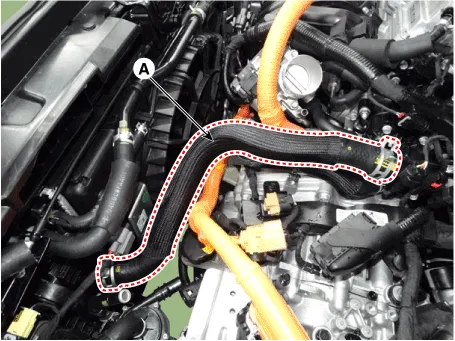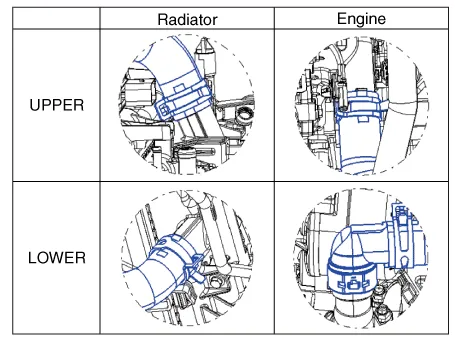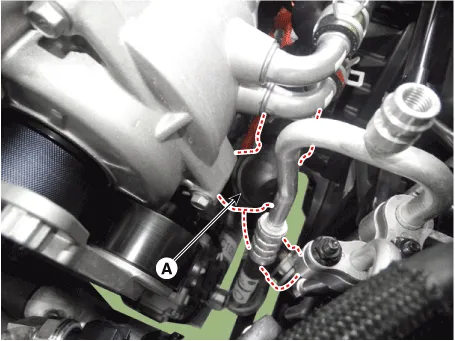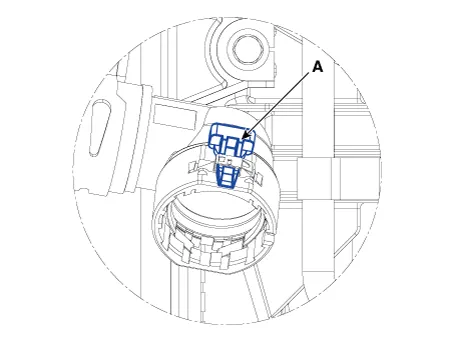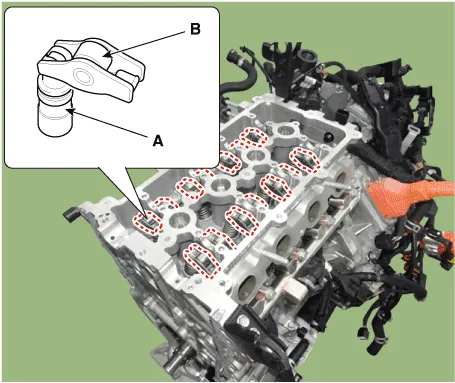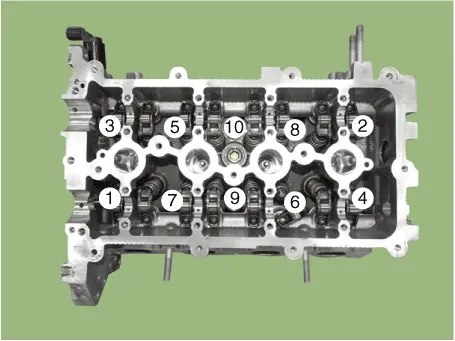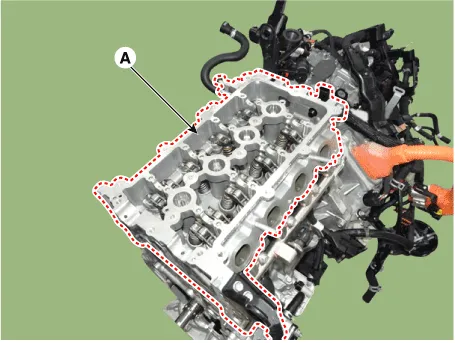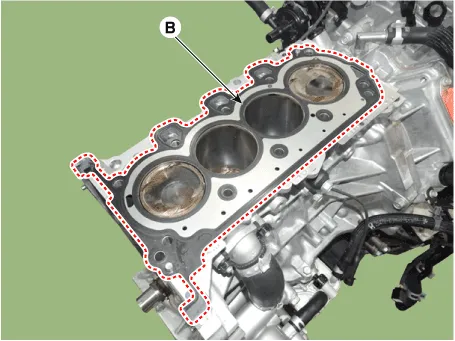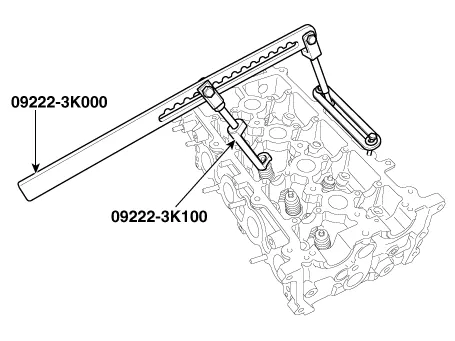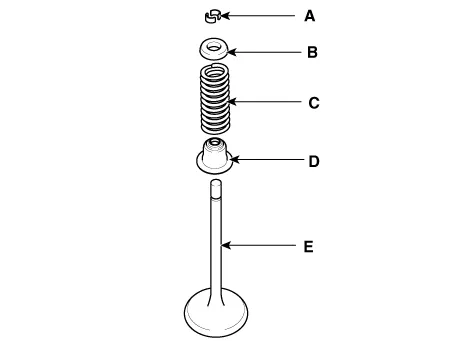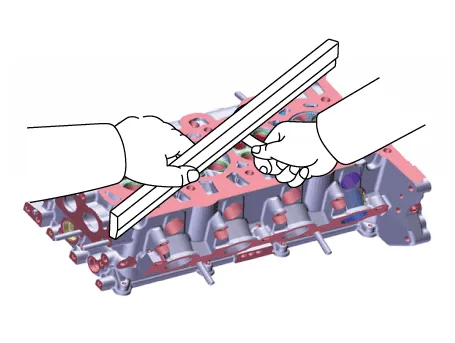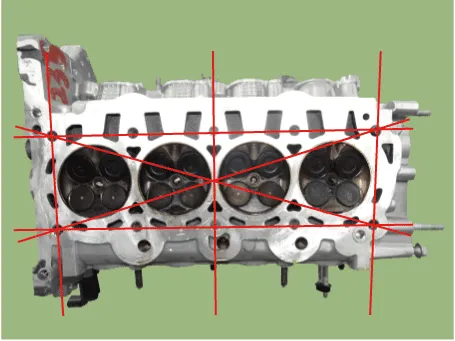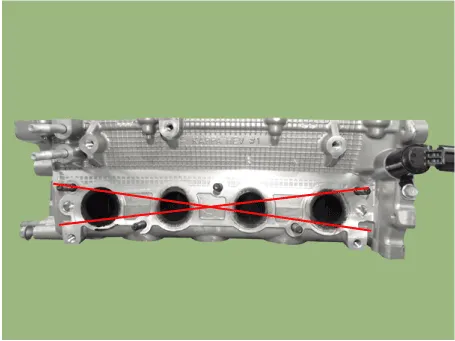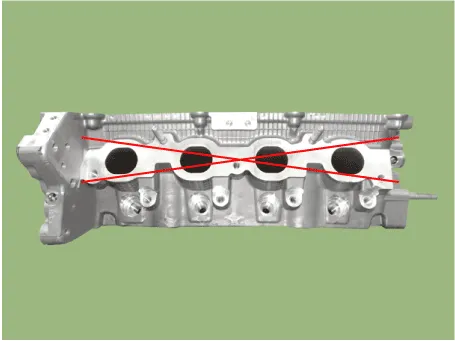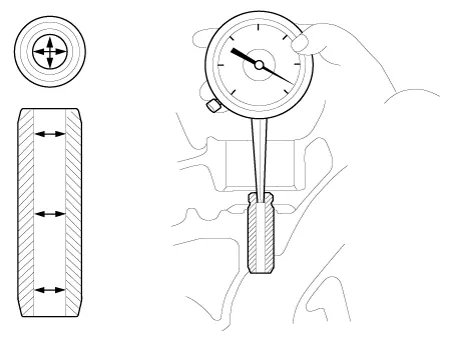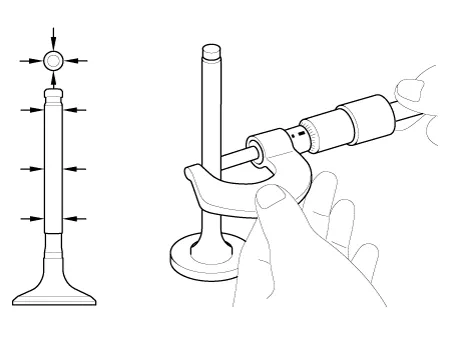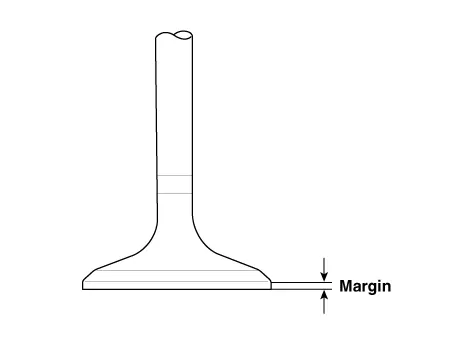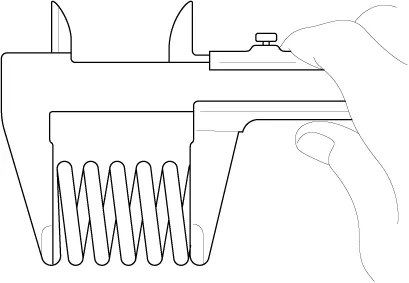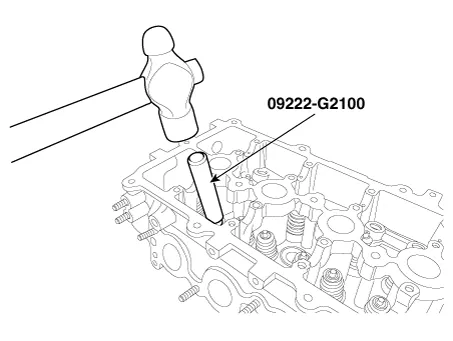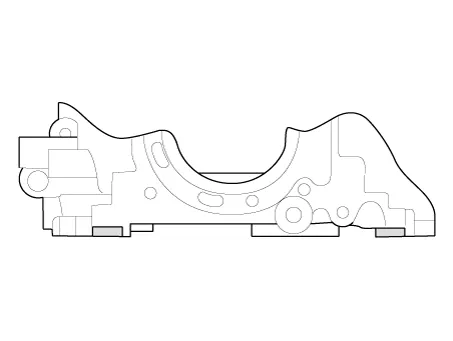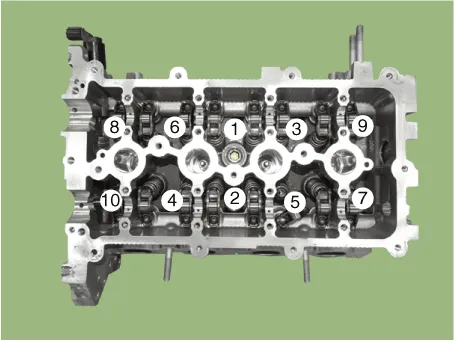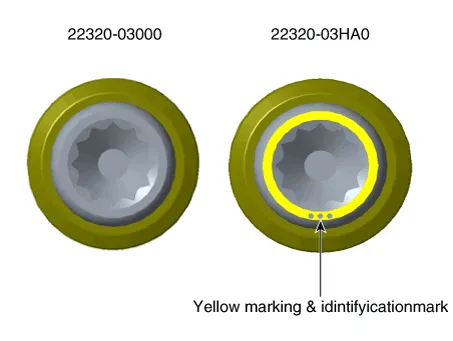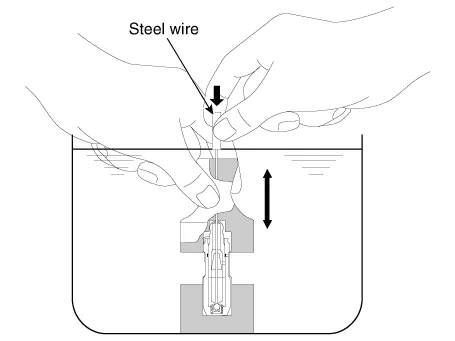Hyundai Ioniq (AE): Cylinder Head Assembly / Cylinder Head. Repair procedures
| Removal |
|
|
|
| 1. | Shut off the High Voltage circuit. (Refer to General Information - "High Voltage Shutoff Procedure") |
| 2. | Disconnect the battery negative terminal. |
| 3. | Remove the air cleaner assembly. (Refer to Intake and Exhaust System - "Air Cleaner") |
| 4. | Remove the RH front wheel. (Refer to Suspension System - "Wheel") |
| 5. | Remove the engine room under cover. (Refer to Engine and Transaxle Assembly - "Engine Room Under Cover") |
| 6. | Loosen the drain plug, and drain the engine coolant. Remove the reservoir cap to help drain the coolant faster. (Refer to Cooling System - "Coolant") |
| 7. | Loosen the drain plug, and drain the inverter coolant. Remove the reservoir cap to help drain the coolant faster. (Refer to Hybrid Motor System - "Coolant") |
| 8. | Disconnect the electric water pump (EWP) coolant hose (A).
|
| 9. | Disconnect the fuel hose (A) and the purge control solenoid valve (PCSV) hose (B).
|
| 10. | Disconnect the wiring connectors and harness clamps and remove the connector brackets around the cylinder head.
|
| 11. | Disconnect the heater hoses (A).
|
| 12. | Disconnect the radiator upper hose (A).
|
| 13. | Disconnect the radiator lower hose (A).
|
| 14. | Remove the water temperature control assembly. (Refer to Cooling System - "Water Temperature Control Assembly") |
| 15. | Remove the cylinder head cover. (Refer to Cylinder Head Assembly - "Cylinder Head Cover") |
| 16. | Remove the intake manifold. (Refer to Intake and Exhaust System - "Intake Manifold") |
| 17. | Remove the exhaust manifold. (Refer to Intake and Exhaust System - "Exhaust Manifold") |
| 18. | Remove the timing chain. (Refer to Timing System - "Timing Chain") |
| 19. | Remove the heater pipe. (Refer to Cooling System - "Water Temperature Control Assembly") |
| 20. | Remove the electric EGR (EEGR) control valve. (Refer to Engine Control / Fuel System - "Electric EGR Control Valve (EEGR)") |
| 21. | Remove the CVVT & camshaft. (Refer to Cylinder Head Assembly - "CVVT & Camshaft") |
| 22. | Remove the hydraulic lash adjuster (HLA) (A) and the swing arm (B).
|
| 23. | Remove the spark plugs. (Refer to Engine Electrical System - "Spark Plug") |
| 24. | Remove the cylinder head.
|
| Disassembly |
|
| 1. | Remove the valves.
|
| Inspection |
| 1. | Inspect for flatness. Using a precision straight edge and feeler gauge, measure the surface contacting cylinder block and the manifolds for warpage.
|
| 2. | Inspect for cracks. Check the combustion chamber, intake ports, exhaust ports and cylinder block surface for cracks. If cracked, replace the cylinder head. |
| 1. | Inspect valve stems and valve guides.
|
| 2. | Inspect valves.
|
| 3. | Inspect valve seats.
|
| 4. | Inspect valve springs.
|
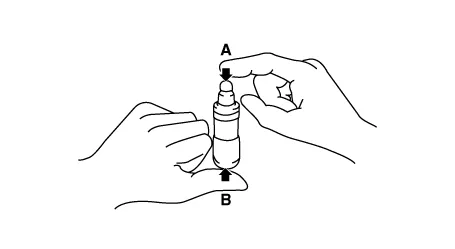
| Problem | Possible cause | Action | |||||
| 1. Temporary noise when starting a cold engine | Normal | This noise will disappear after the oil in the engine reaches the normal pressure. | |||||
| 2. Continuous noise when the engine is started after parking more than 48 hours | Oil leakage of the high pressure chamber on the HLA, allowing air to get in | Noise will disappear within 15 minutes when engine runs at 2000-3000 rpm. If it doesn’t disappear, refer to step 7 below. | |||||
| 3. Continuous noise when the engine is first started after rebuilding cylinder head | Insufficient oil in cylinder head oil gallery | ||||||
| 4. Continuous noise when the engine is started after excessively cranking the engine by the starter motor or band |
| ||||||
| 5. Continuous noise when the engine is running after changing the HLA |
| ||||||
| 6. Continuous noise during idle after high engine speed | Engine oil level too high or too low |
| |||||
| Excessive amount of air in the oil at high engine speed | Check oil supply system. | ||||||
| Deteriorated oil | Check oil quality. If deteriorated, replace with specified type. | ||||||
| 7. Noise continues for more than 15 minutes | Low oil pressure | Check oil pressure and oil supply system of each part of engine. | |||||
| Faulty HLA | Remove the cylinder head cover and press HLA down by hand. If it moves, replace the HLA. |
| Reassembly |
|
| 1. | Install the valves.
|
| Installation |
|
| 1. | Install the cylinder head gasket.
|
| 2. | Place the cylinder head (A) carefully to protect damage to the head gasket during installation.
|
| 3. | Install the cylinder head bolts with washers. Using SST (09221-4A000), install and tighten the 10 cylinder head bolts, in several passes, in the sequence as shown.
|
| 4. | Install the spark plugs. (Refer to Engine Electrical System - "Spark Plug") |
| 5. | Install the hydraulic lash adjuster (HLA) (A) and the swing arm (B).
|
| 6. | Install the other parts reverse order of removal. |
| 7. | Connect the High Voltage circuit. (Refer to General Information - "High Voltage Shutoff Procedure")
|
Components1. Cylinder head assembly2. Cylinder head gasket3. Retainer lock4. Retainer5. Valve spring6. Valve stem seal7. Valve8. Swing arm9. Hydraulic lash adjuster (HLA)
Other information:
Hyundai Ioniq (AE) 2017-2022 Service & Repair Manual: Ambient Temperature Sensor. Repair procedures
Inspection1.Check the resistance of the ambient temperature sensor between terminals 1 and 2 whether it changes by changing the ambient temperature.1. Ambient Sensor (+)2. Sensor groundSpecification Ambient temperature [°C (°F)] Resistance between terminal 1 and 2 (
Hyundai Ioniq (AE) 2017-2022 Service & Repair Manual: Schematic diagrams
System Block DiagramComponent Parts and Function Outline Component part Function Vehicle-speed sensor, ESP/ABS Control ModuleConverts vehicle speed to pulse.VCUReceives signals from sensor and control switches.
Categories
- Manuals Home
- Hyundai Ioniq Owners Manual
- Hyundai Ioniq Service Manual
- Audio Remote Control. Schematic diagrams
- Driving your vehicle
- Theft-alarm System
- New on site
- Most important about car




